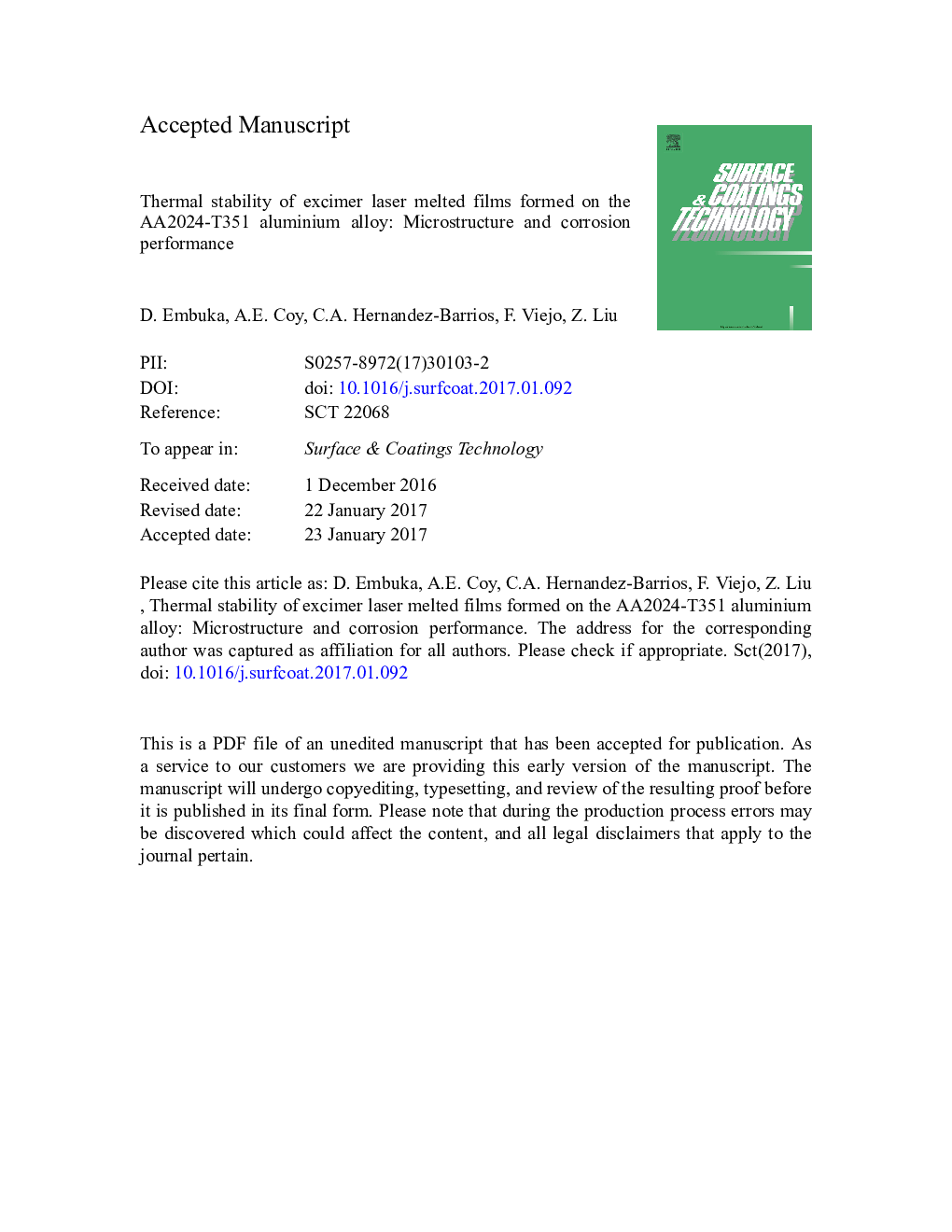| Article ID | Journal | Published Year | Pages | File Type |
|---|---|---|---|---|
| 5465537 | Surface and Coatings Technology | 2017 | 29 Pages |
Abstract
Excimer UV laser radiation sources have recently employed for surface modification of aluminium alloys to provide melted layers with highly refined microstructure and superior pitting corrosion resistance. Moreover, the resultant rough appearance might be an excellent base for the later paint application. Unfortunately, during the paint baking process and depending on the exposure time, the temperature of the alloy may raise up to 200 °C, thus affecting the stability of the melted film. In the present work, the excimer KrF laser source was employed to create a melted film on the aerospace AA2024-T351 aluminium alloy, which was subsequently evaluated under different heat treatments with the aim to evaluate its thermal stability in terms of microstructure and corrosion performance. Microstructural modification was analysed by Scanning Electron Microscopy (SEM) and X-ray Diffraction (XRD), whereas the corrosion performance was evaluated by anodic polarisation and immersion testing in deaerated 0.1 M NaCl solution. The experimental results showed that above 160 °C, heat treatment of the melted layer resulted in the precipitation of the strengthening Al2CuMg phase as well as the nucleation and coarsening of the Al(Cu,Fe,Mn) secondary phase from the solute segregation bands originally formed during laser surface melting (LSM). The formation of these particles influenced the pitting corrosion resistance in two different ways: diminishing the pitting potential (Epit), and increasing both corrosion and passivation current densities. Nevertheless, this reduction was relatively negligible for all the heat treatment conditions studied, when compared to the parent alloy.
Related Topics
Physical Sciences and Engineering
Materials Science
Nanotechnology
Authors
D. Embuka, A.E. Coy, C.A. Hernandez-Barrios, F. Viejo, Z. Liu,
